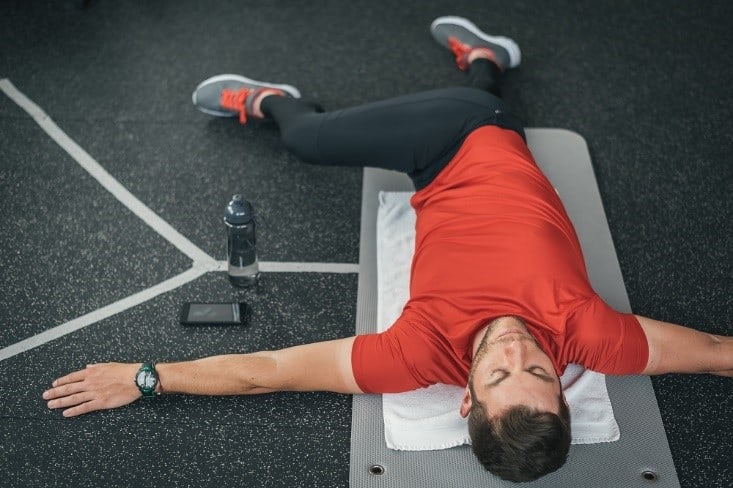There is nothing more satisfying than a strong back. While bulging biceps, pecs, and quads might seem sexy, they aren’t nearly as effective at increasing strength and stability as robust rhomboids, lats, and traps. However, not only is it easy to inefficiently train the back, but it is incredibly easy to injure those muscles (and the tissues around them) and end up with back pain due to improper technique and inaccurate exercises.
If you want a rope-covered back but you don’t want chronic back pain, here are a few common mistakes you should avoid – and if you are already laid low from a back injury, here’s how you can recover and prevent them in the future.
Back Pain Causes
The different muscles in your back go every which way, assisting with all lifts and exercises to some degree. Unfortunately, the complexity of your back’s muscle groups makes injury easy, both inside and outside the gym. Even worse, there are plenty of well-known exercises that are doing more harm than good to your back. Here is what you want to avoid in your workouts to keep back pain at bay:
Hyperextension
The extensors of the lower back are necessary for your compound lifts, and you are likely tempted to train them with isolated moves. However, bodyweight exercises like the Superman and machine-assisted hyperextensions are more likely to hurt you than increase your strength. Overusing your back extensors can cause spondylolysis and other devastating injuries, so you’re better at strengthening your lower back through neutral positions like the plank.
Rounding
Largely thanks to our sedentary lifestyles, it is incredibly common to see people with improperly rounded backs. Slumped shoulders, c-shaped lumbar regions, and other rounding postures aren’t the back’s natural shape, and attempting to lift while the back is so contorted is like asking for injury. Studies have found that flexed spines lose 40 percent of their ability to withstand compressive loads, which means if you lift while your back is round, you will experience pain sooner or later.
Lack of Mobility
Too many athletes focus on strength while ignoring mobility, especially when it comes to the back. Poor spinal mobility can impair your progress in the gym more than you expect, and failure to address mobility issues can compound existing injuries. Poor mobility – rather than lack of strength – often causes rounding. You should have a healthy range of motion in every section of your spine before you engage in heavy or complex lifts, or you are likely to experience pain somewhere in your back.
Back Pain Remedies

Fortunately, not all back pain is permanent. If you have already made the above mistakes and are suffering for it, you can recover fast by following this regimen:
Diagnosis First
It’s difficult to tell without professional help whether your back problem is small or large. You might have a minor sprain in the muscle, or you could require pinched nerve in lower back treatments. The ensuing treatments (and recovery time) depend entirely on what is causing your pain, so you do need to consult a doctor before you try to remedy your back issue and return to the gym.
Treatments
As long as your back problem doesn’t require surgery or similar extensive treatment, you can probably employ the RICE method of recovery. RICE stands for Rest, Ice, Compression, and Elevation, all of which should reduce harmful and painful inflammation and facilitate healing. You might also take nonsteroidal, anti-inflammatory medications for the same purpose. There’s also the option of using steroids for back pain, although not the ones you take to get bigger and stronger. Because the back is so necessary for most workouts, it is best to avoid the gym while you heal – but after you are pain-free for a week, you should be free to hit the weights.
Physical Therapy
During your recovery period, you should be using your back as infrequently as possible, which means your muscles are likely to be stiff and weak when you return to the gym. To prevent reinjury, you should engage in some physical therapy before you dive back into lifting heavy. These bodyweight exercises and stretches should improve your spinal mobility and increase blood flow to the back, preparing the muscles for work. If you require professional guidance, consulting a chiropractor in Flower Mound, TX can help ensure a full recovery and prevent future back injuries.
Return to Exercise
Once your back feels right – and you get the A-OK from your doctor – you can return to normal exercise. However, if you want to avoid another long recovery period, you should be smart about your back exercises. For example, you should always warm up your back muscles with gentle, dynamic stretches before you lift, and you should cool down with static stretches after your workout. It’s also wise to avoid performing the same exercises every day; instead, you should cross-train with other workout styles. By being mindful of your workouts and paying attention to your back, you should avoid injury and pain.
Read more: The Importance of Proper Recovery From Your Workout
Tags: back injury, back pain, exercise, injuries, injury, Medical, pain, prehab, rehab, therapy



